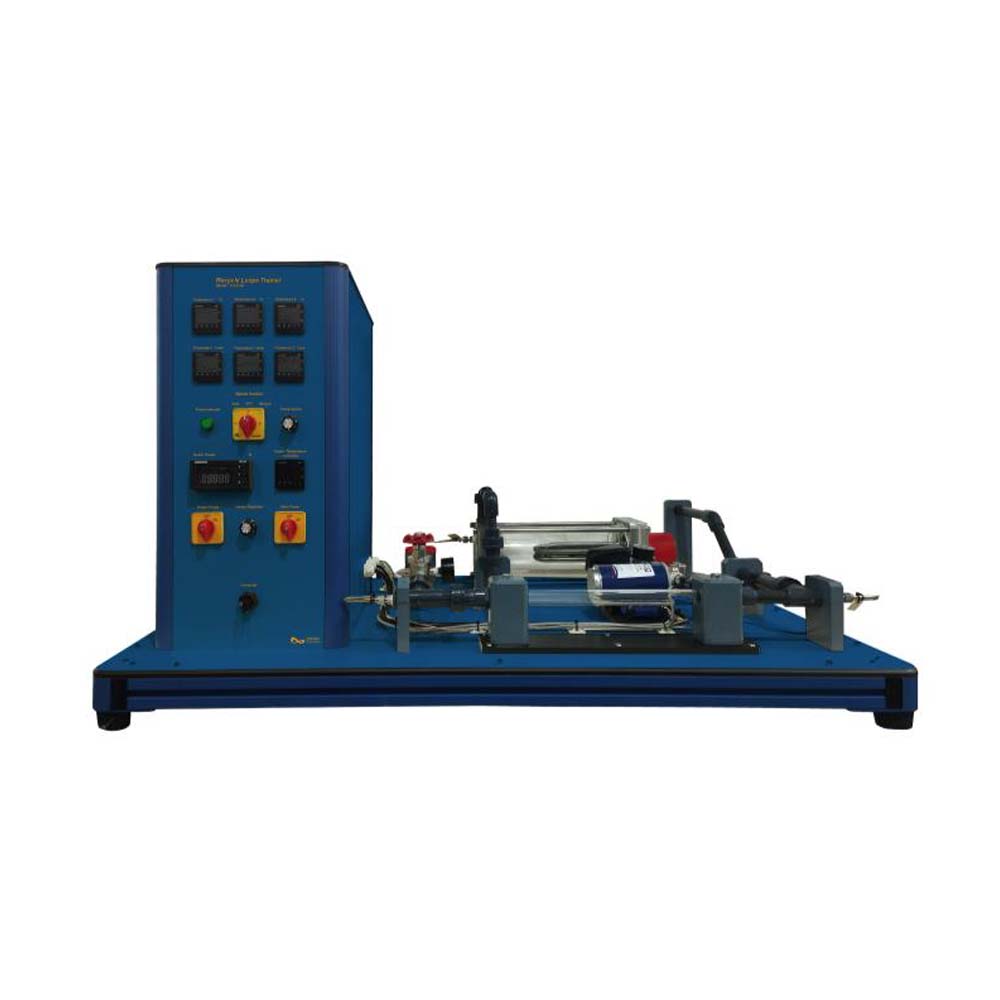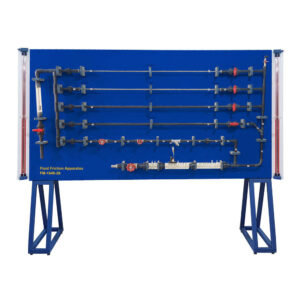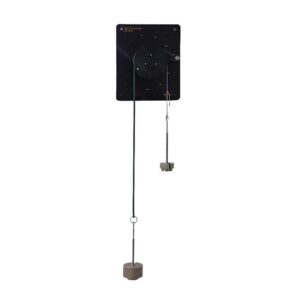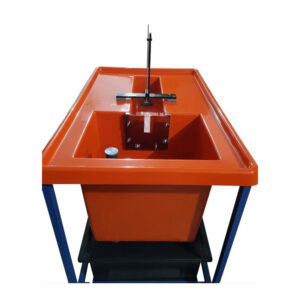Recycle is a simple phenomenon, which occurs in many aspects of everyday life, but is also a concept that can lead to confusion in engineering applications when combined with other principles such as mass / energy balances and the use of the steady flow energy equation. The Recycle Loops apparatus has been designed to demonstrate clearly, both visually and experimentally, what recycle is and to enable mass and energy balances to be performed under steady state and unsteady state conditions. The application modelled is typical of a heating arrangement in the chemical, food or pharmaceutical industries whereby the temperature of a product is increased or decreased offline by recirculating some of the product through a plate heat exchanger. The practical training exercises are appropriate to heat transfer and thermodynamics courses and the training of technicians and engineers in those disciplines. A bench top unit designed to introduce students to the characteristics of a recycle loop and the typical responses under steady state and unsteady state conditions. The apparatus consists of a through pipe conveying water from a cold water supply to a suitable drain with a loop of pipework connected between the supply and drain connections. This recycle loop incorporates a circulating pump and a heater to raise the temperature of the water in the loop. The heater can be switched on or off to generate step changes when investigating the transient responses of the recycle loop. A waste free quick disconnection fitting enables a short length of pipe or a reservoir to be connected in series with the recycle loop to change the volume of the loop and demonstrate the effect of residence time. The arrangement also permits different lengths of flexible tubing to be connected in series with the loop if it is required to create further changes in residence time. Water temperatures at the inlet, outlet and within the recycle loop are measured using K-type thermocouples. Water flow rates at the corresponding locations are measured using miniature turbine type flow sensors. Flow sensors are included at the outlet as well as the inlet to show that these two flow rates are always equal (a simple principle that is often confusing when water is flowing through the recycle loop). All power supplies, signal conditioning circuitry etc. are contained inside the control panel with integral console with appropriate current protection devices and an RCD for operator protection. Readings from the sensors are displayed on a digital meter and all corresponding signals are send to DAQ for connection to a PC using USB port included with educational software package (optional).
Experiments
- Understanding the meaning of recycle
- Steady state heat and mass balances
- Unsteady state responses to step changes in passing flow rate, heat input to the loop or
- recycle rate
- The effect of residence time can be demonstrated by changing the volume of the loop
Steady state mass balances
- Demonstrating that whatever the recycle rate, inlet and outlet flow rates remains equal.
Steady state heat balance
- With the heater switched on and at fixed input water flow rate the outlet temperature is independent of the recycle rate
- With the heater switched on the temperature change between inlet and outlet can be used to determine the combined heat input of the heater and pump at different input water flow rates
Unsteady state heat balance
- Determining the response when the heater is switched on at different passing flow rates
- Determining the response when the heater is switched off at different passing flow rates
- Determining the effect of a step change in the input flow
- Determining the effect of recycle with no passing flow
Use of the steady flow energy equation
- For the overall system
- For the mixing process Effects on response rates to parameter changes
- In heater power
- In through flow
- In recycle flow
- In loop volume
Specification
- A bench top unit comprising apparatus assembly and control panel with integral electrical console on to which is mounted a through pipe with a recycle loop, which incorporates a circulating pump and heater
- A pressure regulator with filter at the inlet to the apparatus minimizes the effect of fluctuations in the cold water supply pressure.
- Water in the recycle loop is heated by a 2kW electric heater with over temperature protection.
- Flow in the loop can be varied from 0 (no recycle) to 7 l/min.
- The passing flow of water can be varied from 0~7 l/min
- Temperatures at the entry to the system, at the exit from the system and inside the recycle loop are measured using K-type thermocouples.
- Flow rates at corresponding locations are measured using turbine type flow sensors.
- A reservoir with waste free quick disconnection fittings enables the volume of the loop to be changed
- All electrical circuits are protected by appropriate protection devices
- The console incorporates a digital meter, which displays the temperatures and flow rates measured.
- Corresponding signals can be send to DAQ via LAN or USB port for connection to a PC if DAQ selected




